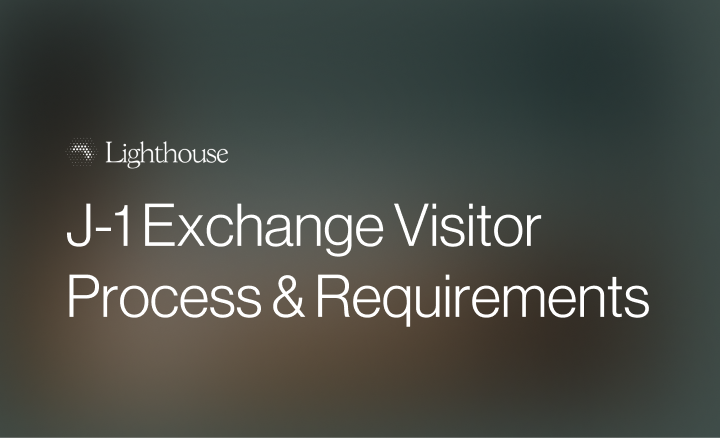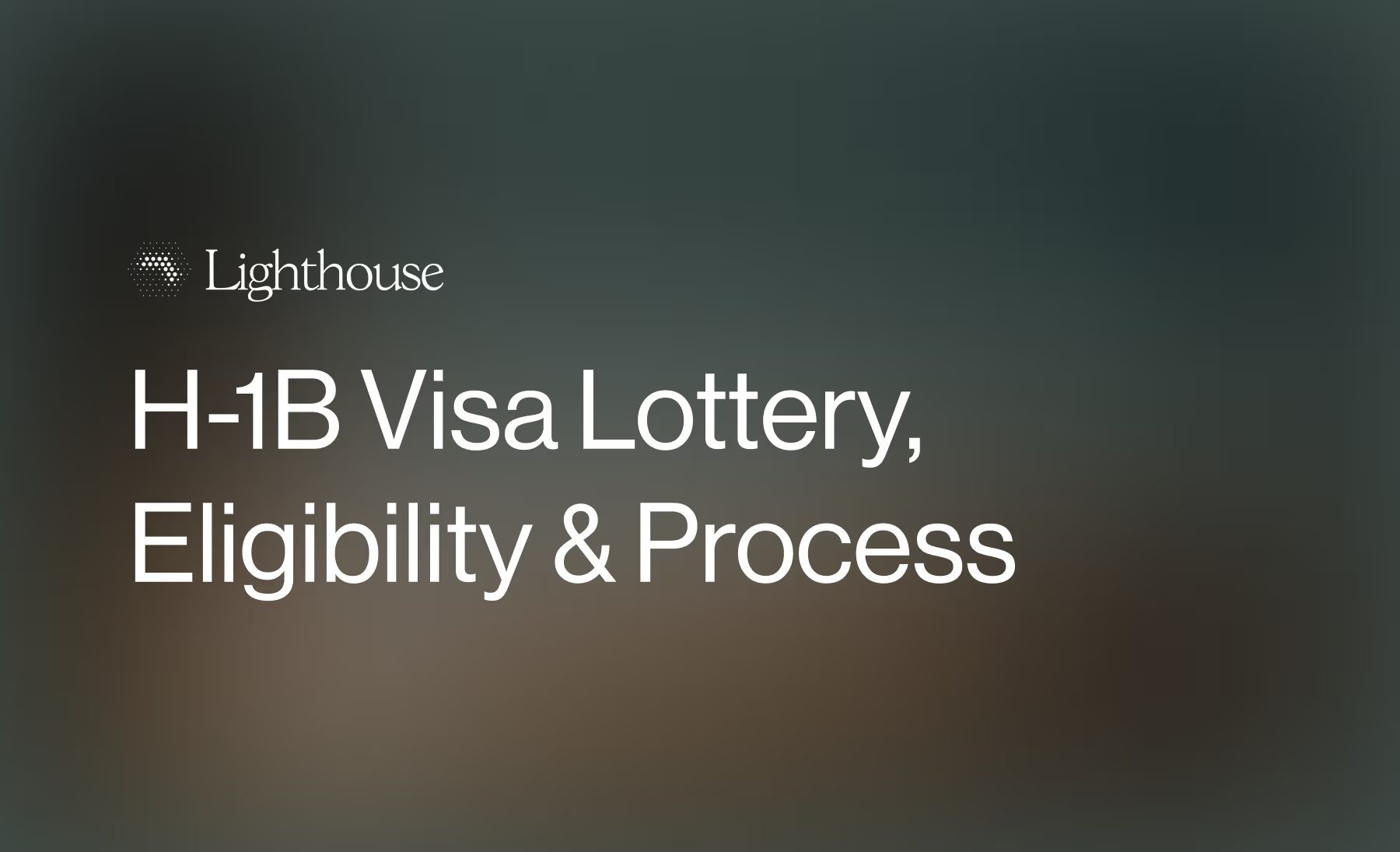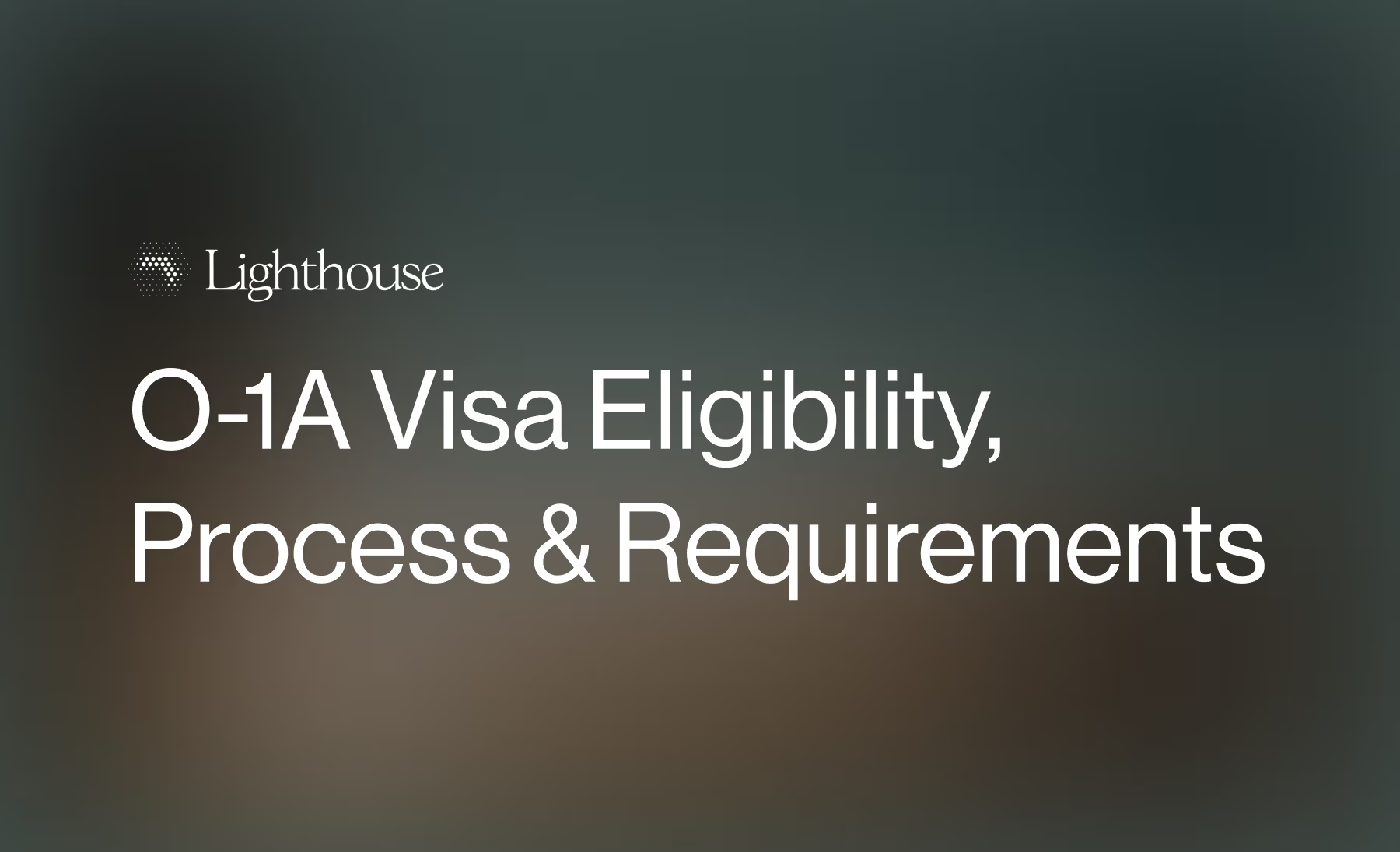Form I-140 Explained
Everything you need to know about Form I-140 for employment-based immigration.


If you’re an employer sponsoring a foreign professional or an individual pursuing permanent residence through employment, Form I‑140 is a critical step. This guide explains what Form I‑140 is, who files it, how to prepare and submit it, and what happens after approval. It also covers fees, processing times, and compliance details based on current U.S. Citizenship and Immigration Services (USCIS) guidance.
What is Form I‑140 and why it matters
Form I‑140, officially called the Immigrant Petition for Alien Worker, is used to request that USCIS classify a foreign national under an employment‑based immigrant visa category. It establishes that the beneficiary qualifies for a green card based on their professional background and that the petitioner (usually a U.S. employer) has a legitimate job offer and the ability to pay the offered wage.
This form connects three government bodies:
- USCIS (U.S. Citizenship and Immigration Services): Reviews and adjudicates the petition.
- Department of Labor (DOL): Certifies labor market conditions through the PERM process when required.
- Department of State (DOS): Issues immigrant visas abroad and manages the Visa Bulletin that controls when applicants can move forward.
Form I‑140 is central to the employment‑based green card process. Approval secures a priority date, which determines when the beneficiary can apply for permanent residence through either adjustment of status (Form I‑485) or consular processing abroad.
For official details, see the USCIS Form I‑140 page.
Who must file Form I‑140 and when
The petitioner is typically the U.S. employer offering a full‑time, permanent position. The employer files Form I‑140 after obtaining an approved labor certification from the Department of Labor, unless the category is exempt from that requirement.
There are two main exceptions where individuals may self‑petition:
- EB‑1A (Alien of Extraordinary Ability): For individuals who can demonstrate sustained national or international acclaim in their field.
- EB‑2 National Interest Waiver (NIW): For professionals whose work benefits the United States broadly enough to waive the job offer and labor certification.
Timing depends on the visa category. For PERM‑based cases, the I‑140 must be filed within 180 days of labor certification approval. For self‑petitioners or categories exempt from PERM, filing can occur at any time once eligibility evidence is ready.
After approval, the beneficiary may proceed to the next stage by filing Form I‑485 for adjustment of status if already in the U.S., or completing Form DS‑260 for consular processing through a U.S. embassy or consulate abroad.
Eligibility categories for I‑140 petitions
Employment‑based immigrant petitions fall into five preference categories. Form I‑140 covers the first three.
EB‑1: Priority workers
- Extraordinary ability (EB‑1A): For individuals with extraordinary ability in sciences, arts, education, business, or athletics. Evidence may include internationally recognized awards, published material about the person’s work, or proof of a high salary. No job offer or labor certification is required.
- Outstanding professors and researchers (EB‑1B): Requires international recognition for outstanding achievements in a specific academic field and at least three years of experience in teaching or research. A U.S. employer must provide a permanent job offer.
- Multinational executives and managers (EB‑1C): For executives or managers who have worked abroad for a qualifying multinational company for at least one of the past three years and are being transferred to a U.S. affiliate.
EB‑2: Professionals with advanced degrees or exceptional ability
This category covers individuals with an advanced degree (master’s or higher, or a bachelor’s degree plus five years of progressive experience) or those with exceptional ability in the sciences, arts, or business.
Most EB‑2 cases require a labor certification, except for the National Interest Waiver (NIW), which allows self‑petitioning if the applicant’s work has substantial merit and national importance.
EB‑3: Skilled workers, professionals, and other workers
- Skilled workers: Jobs requiring at least two years of training or experience.
- Professionals: Positions requiring a bachelor’s degree or equivalent.
- Other workers: Unskilled labor requiring less than two years of training or experience.
Each EB‑3 case requires an approved labor certification and a permanent, full‑time job offer.
For detailed eligibility standards, see 8 CFR §204.5.
Step-by-step I‑140 filing process
Step 1: Confirm labor certification (if required)
Most EB‑2 and EB‑3 petitions require a certified PERM labor certification from the Department of Labor. This document verifies that no qualified U.S. workers are available for the position and that hiring a foreign worker will not adversely affect U.S. wages or working conditions.
Step 2: Gather supporting documents
Collect all required documentation before filing. This includes the approved labor certification, proof of the employer’s ability to pay, and evidence of the beneficiary’s qualifications.
Step 3: Complete Form I‑140
Download the latest version from the USCIS website. The form must be signed by the petitioner or authorized representative. Double‑check the petition type and visa category selections to match the intended classification.
Step 4: Prepare the filing package
Include:
- Form I‑140
- Filing fee payment (check, money order, or credit card using Form G‑1450)
- Required supporting documents
- Cover letter listing contents and evidence
- Optional Form G‑1145 for electronic case updates
Step 5: Submit to the correct service center
Where to file depends on the petitioner’s location and the visa category. USCIS provides current direct filing addresses for Form I‑140. Always verify before mailing, as addresses change periodically.
Step 6: Receive receipt notice
After submission, USCIS issues Form I‑797C, Notice of Action, with a receipt number. You can use this number to check your I‑140 status on the USCIS Case Status tool or through an I‑140 tracker platform.
Step 7: Wait for adjudication
Processing times vary by service center and visa category. You can view current averages on the USCIS Check Case Processing Times page. Always confirm the latest data for your petition type.
Step 8: Respond to any Request for Evidence (RFE)
If USCIS requires additional information, it will issue an RFE specifying what documents are missing or unclear. Respond within the stated deadline to avoid denial.
Step 9: Receive the approval notice
When approved, USCIS issues Form I‑797, Approval Notice. This confirms classification and priority date, allowing the beneficiary to move forward with adjustment of status or consular processing.
Required supporting documents
A complete Form I‑140 petition typically includes:
- Approved labor certification (PERM): Required for most EB‑2 and EB‑3 cases.
- Proof of ability to pay: Employer’s annual report, audited financial statements, or federal tax returns.
- Beneficiary’s qualifications: Degrees, transcripts, credential evaluations, and work experience letters.
- Job offer letter: Describing duties, minimum requirements, and salary.
- Evidence of extraordinary or exceptional ability: Awards, publications, critical reviews, testimonials, or proof of a high salary.
- Corporate documentation: Business license, IRS registration, or nonprofit status if applicable.
- Schedule A documentation: For occupations pre‑certified by the Department of Labor, such as certain healthcare roles.
For official evidence requirements, review the Form I‑140 Instructions.
Fees and processing options
Standard filing fee
The current I‑140 filing fee is $715. Payment must be made by check, money order, or credit card (Form G‑1450). Make checks payable to “U.S. Department of Homeland Security.” Always confirm the latest amount on the USCIS Fee Schedule.
Premium processing service
Employers or beneficiaries may request expedited processing through Form I‑907, Request for Premium Processing Service. The I‑140 premium processing fee is $2,500, guaranteeing a decision or RFE within 15 calendar days. This option is available for most EB‑1, EB‑2, and EB‑3 categories.
Premium processing can be filed together with Form I‑140 or later while the petition is pending. The fee can be paid by either the employer or the beneficiary, depending on company policy.
Other costs
- Credential evaluations: Typically $100–$300 depending on provider.
- Translations: Must include a certification of accuracy.
- Mailing or courier fees: Vary by service.
Electronic vs. paper filing
As of 2025, most Form I‑140 petitions must still be filed by mail. USCIS has begun limited electronic filing through organizational accounts on myUSCIS, but availability remains restricted to certain petition types.
After filing, you can monitor progress using the receipt number on the USCIS case status page or through third‑party I‑140 tracker tools such as Lawfully or TrackITT. Always rely on the official USCIS site for definitive updates.
Amendments, withdrawals, and corrections
If the job offer, employer structure, or work location changes before adjudication, the petitioner may need to file an amended Form I‑140. If the employer withdraws the petition, USCIS will record the withdrawal, but the beneficiary may retain the priority date for future filings in many cases.
Withdrawals or denials can affect eligibility for H‑1B extensions or adjustment of status. Review the USCIS Policy Manual, Volume 6, Part E, Chapter 2 for detailed rules on validity and portability.
After I‑140 approval: what happens next
The I‑140 approval notice (Form I‑797) confirms that USCIS has recognized the beneficiary’s eligibility for an employment‑based immigrant visa. The next step depends on the beneficiary’s location and visa availability.
Priority date and visa bulletin
Each I‑140 approval establishes a priority date, usually the date the labor certification was filed or, for exempt categories, the I‑140 filing date. The Department of State publishes a monthly Visa Bulletin showing which priority dates are current for each country and category.
Adjustment of status (Form I‑485)
If the beneficiary is in the United States in lawful nonimmigrant status and a visa number is available, they may file Form I‑485 to adjust status to lawful permanent resident. This step can include applications for work and travel authorization.
Consular processing
If the beneficiary is outside the U.S., the case moves to the National Visa Center and then to a U.S. embassy or consulate for an immigrant visa interview. Once the visa is issued, the individual can enter the U.S. as a permanent resident.
Portability and retention
An approved I‑140 can often be used to extend H‑1B status beyond six years or transferred to a new employer under certain conditions. The priority date generally remains valid if the petition has been approved for at least 180 days, subject to USCIS policy.
Benefits of filing Form I‑140 successfully
- Establishes a permanent record of employment‑based eligibility.
- Secures a priority date for the green card process.
- Enables H‑1B extensions beyond six years under the American Competitiveness in the Twenty‑First Century Act (AC21).
- Allows beneficiaries to begin the immigrant visa or adjustment stage when a visa number becomes available.
- Demonstrates the employer’s compliance with DOL and USCIS requirements.
For HR professionals, a properly filed I‑140 also supports workforce planning and compliance with Department of Labor wage obligations.
Recent policy and processing updates
- Premium processing expansion: USCIS has extended premium processing to EB‑1C multinational executives and EB‑2 NIW petitions.
- Digital filing initiatives: The U.S. Department of Homeland Security continues to expand electronic filing and case tracking through myUSCIS.
- Fee adjustments: The April 2024 USCIS fee rule updated filing fees for multiple forms, including I‑140.
- Processing transparency: USCIS now publishes more detailed service center data through its Processing Times portal.
For official announcements, see the USCIS Newsroom, Federal Register, and U.S. Department of Justice.
Expert immigration filing and compliance support through Lighthouse
Lighthouse helps employers and professionals manage every stage of the employment‑based immigration process. The platform combines document preparation, case tracking, and expert review aligned with USCIS and Department of Labor requirements. The team coordinates filings, monitors I‑140 processing times, and manages timing for adjustment or consular stages.
Learn more about Lighthouse’s immigration platform for employers and individuals seeking efficient, compliant filings.
Frequently asked questions
What is Form I‑140 used for?
It’s the petition that allows a U.S. employer (or in some cases, an individual) to request classification for an employment‑based immigrant visa. Approval confirms eligibility for permanent residence under EB‑1, EB‑2, or EB‑3 categories.
Who can file an I‑140 petition?
Usually a U.S. employer offering a full‑time, permanent job. Certain individuals with extraordinary ability or a national interest waiver may self‑petition.
What is the current I‑140 processing time?
Processing times vary by service center and category. Check current averages on the USCIS processing times page.
How long does premium processing take?
Premium processing guarantees USCIS will issue a decision or request for evidence within 15 calendar days.
Can employees pay the I‑140 filing fee?
Yes, though most employers cover it. The fee must be paid to the U.S. Department of Homeland Security by check, money order, or credit card.
How do I track my I‑140 petition after filing?
Use the receipt number on the USCIS Case Status tool or an I‑140 tracker platform.
What does the I‑140 approval notice mean?
It confirms USCIS has approved the immigrant petition and assigned a priority date. The beneficiary can then move to adjustment of status or consular processing.
Can I change employers after my I‑140 is approved?
Yes, under certain conditions. If the I‑140 has been approved for at least 180 days and the I‑485 has been pending for the same period, portability rules may allow a job change in the same or similar occupational classification.
What happens if my I‑140 is withdrawn or denied?
If withdrawn before 180 days, the petition is void. If withdrawn after 180 days, the priority date may still be retained for future filings.
When can I file Form I‑485 after I‑140 approval?
When your priority date becomes current according to the Department of State Visa Bulletin and a visa number is available.
Lighthouse provides expert guidance and legal review to strengthen your case.
From document prep to USCIS submission, Lighthouse ensures your petition meets every requirement.

%201.svg)




